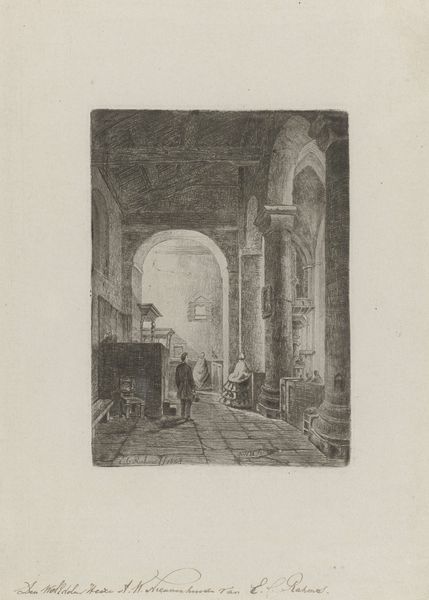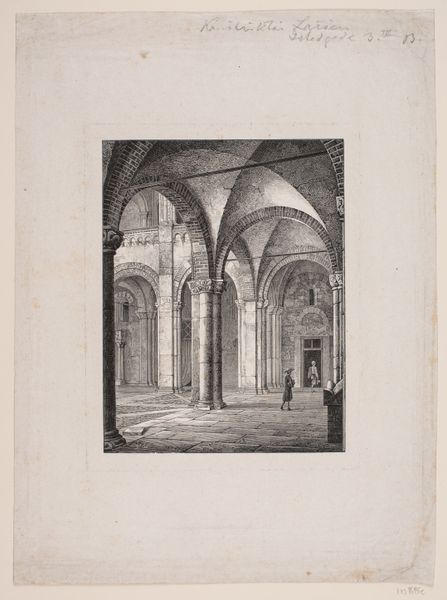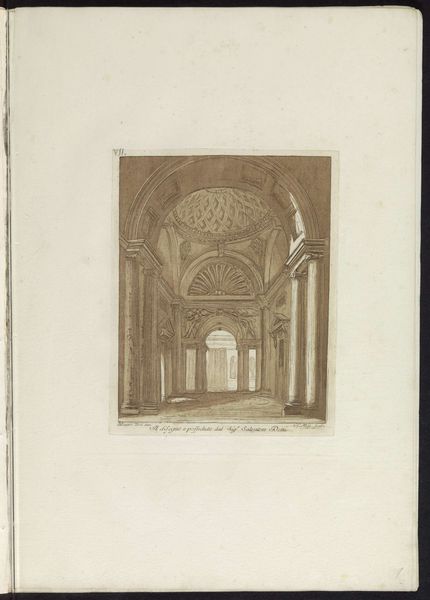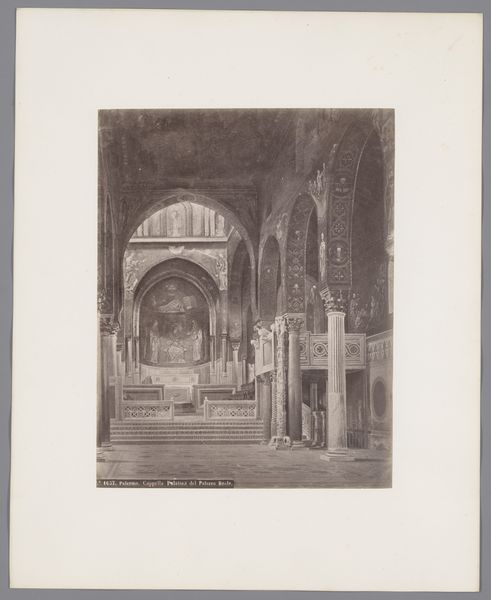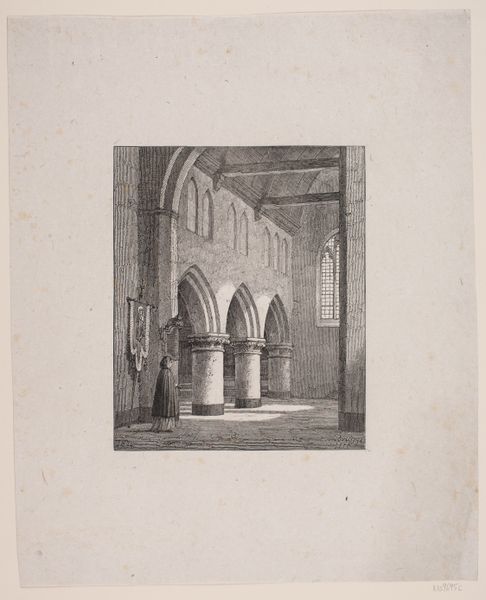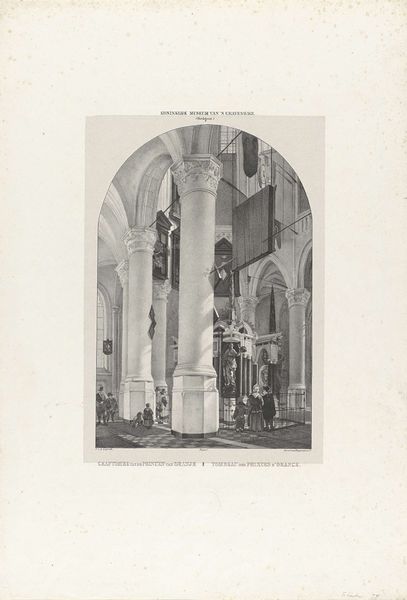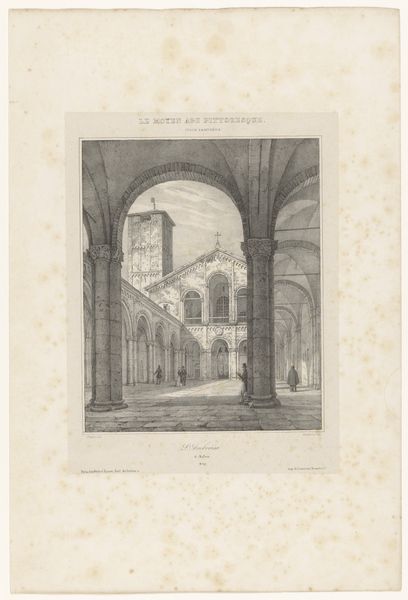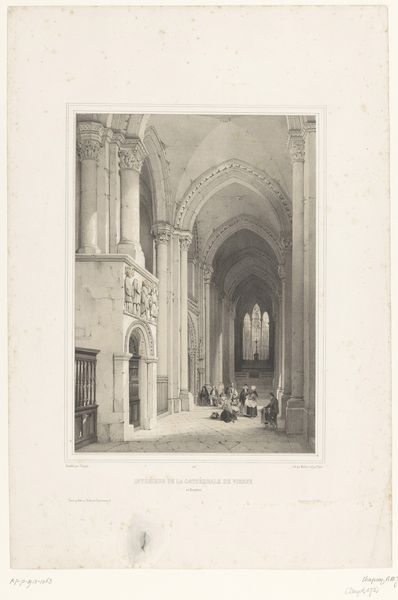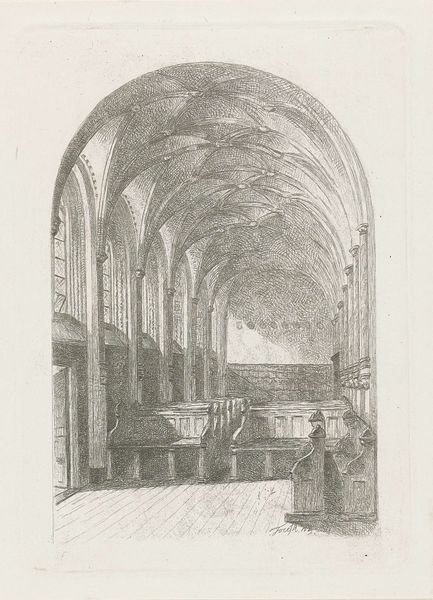
Dimensions: height 535 mm, width 350 mm
Copyright: Rijks Museum: Open Domain
Curator: Here we have Johannes Bosboom's "Kerkinterieur," created sometime between 1827 and 1891. It’s a drawing using pencil and ink on paper and part of the Rijksmuseum's collection. Editor: Immediately, I’m struck by the scale of the architecture, juxtaposed with these tiny figures. The cool greys lend such a quiet, contemplative mood. You can almost hear the echo. Curator: Indeed, Bosboom was celebrated for capturing the essence of church interiors, playing with light and shadow to evoke a sense of the sublime. Consider how genre-painting intersects here within these cathedral spaces. His work fits within broader trends in the 19th century toward realism and Romanticism in how artists interpreted historical and contemporary architecture. Editor: And speaking of capturing, look at the almost photographic level of detail he achieves using humble pencil and ink. The labour that went into replicating these geometric forms, those gothic arches, you can feel the artist’s hand at work, meticulously recreating this space, echoing perhaps, the craftsman who originally built this church itself! Curator: Precisely! The pencil drawing allowed a wider audience access to depictions of these grand spaces. They become documents, shaped by Bosboom’s artistic interpretation, reflecting societal interests in architectural history and the power of religious institutions at the time. Editor: There is also the element of Romanticism; how the everyday activity within these majestic interiors is rendered. You think of the availability of paper at this time too. His work isn’t just an observation, it is constructed from very material conditions. What did the manufacturing look like, the industrialization in those papers and inks at this time? How did they play a part in the art's accessibility? Curator: Excellent point. These sketches found their way into the burgeoning middle-class homes, shaping their understanding of religious space and architectural significance. This piece offers a glimpse into the cultural importance attached to church architecture in the 19th century and Bosboom’s role in mediating that for the public. Editor: Exactly, it's more than just art; it's social and cultural evidence created with certain techniques and material affordances from the period! It prompts so many avenues for further explorations. Curator: A great example how context enhances our perception of the past, providing us all an enduring insight.
Comments
No comments
Be the first to comment and join the conversation on the ultimate creative platform.

